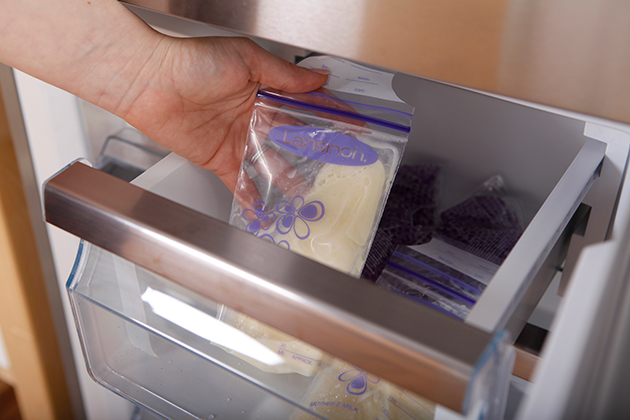Advice Articles
- Home
- Advice Articles
- Breastfeeding
- Breastfeeding and Teething
Breastfeeding and Teething

Teething is a very common cause of unsettled behaviour in your baby between the ages of 6 months and 2 years.
The sensation of teething can cause increased saliva production (hence all the drool), an aching jaw and unpleasant pressure as teeth start pushing up through the gums. To counteract and cope with those sensations your little one may have an increased need to gum and chew things.
Signs of teething:
- fussiness
- increased drooling
- need to gum and chew
- redness on gums
Many women fear for their nipples during this period, but don’t worry!
An actively suckling baby can physically not bite as the tongue is covering the bottom teeth during a good latch. Some babies never attempt to try out their teeth on your nipples, but if gumming the nipple and biting become an issue, one thing you can do is to observe your child closely to see when active feeding has finished. Once you see signs of slowing down at the breast, unlatch your little one by gently breaking the seal by inserting a clean finger at the corner of their mouth. At that point, offering an alternative to chew may work well as a preventative measure. If your nursling tends to gum and bite at the beginning of a feed, offer the same measures before getting started. Things that may work well as an alternative to gum and chew are specially designed chilled teething toys or chilled/frozen washcloths to soothe teething troubles.
Occasionally babies attempt to try out their new teeth and the new sensation within their mouths and jaw by nipping without much warning. Inserting your finger between his/her gums behind the front teeth helps extract the nipple generally, though if this does not work, pulling your baby firmly into your breast is also effective as baby has to open her mouth to breathe and, therefore, unlatches herself.
Ending the nursing session and telling your baby that biting hurts usually gets the message across that biting and nursing definitely do not go together. It may take some repetition but baby will eventually understand that biting will mean a temporary stop in nursing.
Teething can also cause breastfeeding refusal from your baby due to the oral discomfort experienced. Offering feeds proactively when your baby is settled rather than awaiting unsettled periods may be helpful in that case.If after cuddles, patience and alternative methods to soothe the discomfort have not been successful, offering pain relief may be appropriate to coax your baby back to the breast first consulting your baby’s health care provider for further advice.
Another thing to keep in mind is that your nipples may feel somewhat tender again, either due to the issues mentioned above or indeed due to the structural changes happening in the baby’s mouth. Being extra mindful of maintaining good latch and positioning will be especially helpful in this period of change.
Once the initial phase of trying out new teeth has passed (and indeed also during this phase), breastfeeding will be an amazing tool to easily your little one’s discomfort, night and day.
Related Categories
Related Articles
-

Back To Work Checklist
Start pumping and freezing your milk, in date labelled containers, about a month before...
Read More -

Sleep Patterns
For the first six months your baby should sleep in a moses basket or...
Read More -

Storing Expressed Breastmilk
Safe temperature storage guidelines The following are guidelines from La Leche League International on how...
Read More -

Returning To Work
However, this does not mean that you have to stop breastfeeding. You could: request...
Read More
Related products
-

Private: Feeding Bottle with NaturalWave® Teat
In order to achieve your breastfeeding goals, you may choose to express your precious breast milk and... View -
... View -

Private: NaturalWave® Teats
50 years of extensive research revealed that a baby's sucking style consists of 3 key steps: latching... View -

HPA® Lanolin Nipple Cream for Sore & Cracked Nipples
Sore nipples are very common during breastfeeding and can often be a result of the uncomfortable positioning... View
